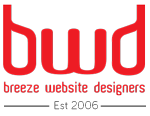09 May 5 Ways to Write Attention-grabbing Headlines
 If you are reading this, the above headline obviously worked.
If you are reading this, the above headline obviously worked.
This may seem like a small feat, but if you consider the vast amount of information people are exposed to daily, enticing a reader to read more than just a headline is quite an achievement.
As a consumer living in the information era, you are exposed to a daunting amount of content clutter. According to A Day in the Internet, 2 million blog posts, 400 million tweets, 294 billion emails, and 864 000 hours of video are created every day. It has therefore become an impossible task to read everything we are exposed to on the very wide world web. A simple yet essential that method users unconsciously exercise to separate the newsworthy from the noise, is to use headlines as a filter.
On average, 80% of readers never read past the headline. Even more noteworthy is that the viral content platform, Upworthy, stated that their statistics show traffic can vary by up to 500% based simply on the headline.
The trick is to get people to click – and that is why the headline is so important.
The headline is the hook
Co-founder of Upworthy, Peter Koechley, says that the media landscape has “more of a demand problem than a supply problem – how do you get people to care about important stuff amidst the avalanche of content we all face each day?” Over and above the endless amount of online content, potential readers also have limited time and an even more limited attention span.
Copywriting legends, such as David Ogilvy, understood this. This is why Mr. Ogivly would apparently spend half of his time on an advertising campaign creating the headline – for a Rolls Royce advertisement, he reportedly rewrote the headline 104 times before he was satisfied.
Why?
Because an article’s headline is its hook. And in an online environment, it not only determines the amount of readers you catch and reel in, but also the social shares it will get.
Beware of the bait
One way to lure your readers into clicking on your article is what is known as click-bait. In an article by Wired, Ben Smith from Buzzfeed defines this tactic as “an article that doesn’t deliver on its headline’s promise.” Some may say that this is mild way of defining it – that click-bait is nothing else but false advertising, because the headline misleads a reader into clicking through to an article that doesn’t deliver on the promise the headline gave.
Unfortunately, click-bait is still around because of its effectiveness.
According to a recent study, Wired continues, click-bait works because firstly, emotion plays a significant role during your intuitive judgements, and….due to the laziness of your brain. To explain this more clearly, here is a typical example of an existing click-bait headline:
I Left My Husband & Daughter At Home And THIS Happened! I Can’t Believe It!
The headline actually has nothing to do with the video, which is of a father and his daughter singing ‘Tonight you belong to me’. Despite this, this YouTube video has almost 15 million views.
Tricks to get clicks
For copywriters who aim for more than mere click-throughs, and actually want to convey a message through the article they write, click-bait is not a solution. You don’t want to fool your audience into reading the article.
Yet, it cannot be debated that some of the tricks these click-baiters use are effective. The challenge is to find a balance between enticing a reader to click on your headline, while avoiding a spam-like approach.
Here are my five suggestions:
- It’s a numbers game
If you don’t believe me, simply have a look at Buzzfeed’s homepage. Almost every headline has a number in it. In a research study by Conductor, statistics showed that a headline with a number in resonated with 36% of the audience (out of only 5 categories). One shouldn’t force a number in a headline if it doesn’t fit with the style or content, but by using a number, readers have a good idea of what to expect from the article. It also tends to come across as an advisory piece, which people respond to emotionally.
- Take your time
As mentioned before, the headline is almost the most crucial part of an article. If it doesn’t grab a potential reader’s attention, all the time spent on the article’s body was in vain. Learn from the industry leaders, such as David Ogilvy, and spend more time crafting your headline.
- The here-you-go headline
The New Yorker suggests following Jerod Morris’ advice, a writer on CopyBlogger. “Use your headline to tell people exactly what problem you’re going to solve or exactly what solution you’re going to provide…” This ties in with the guideline to use numbers – the two usually complement each other and makes it clear to readers that they will be receiving advice. Another tactic would be to start with ‘How to’ or phrase your headline as a question.
- Stick with straightforward
Readers don’t like playing hard-to-get when it comes to headlines. The clearer your headline, the more it will resonate with the right audience. Mashable’s website is a good example of keeping it interesting without any ambiguity.
- Would you click?
I’ve given this advice before because it is so crucial to put yourself in the reader’s seat. Yet many copywriters tend to get so focused on the task at hand that they forget to write something in a way that would be of interest to them. Make sure your article gives a unique perspective, provides valuable information, or shares a thought-provoking opinion.
Simply put: Write something you would want to read.

